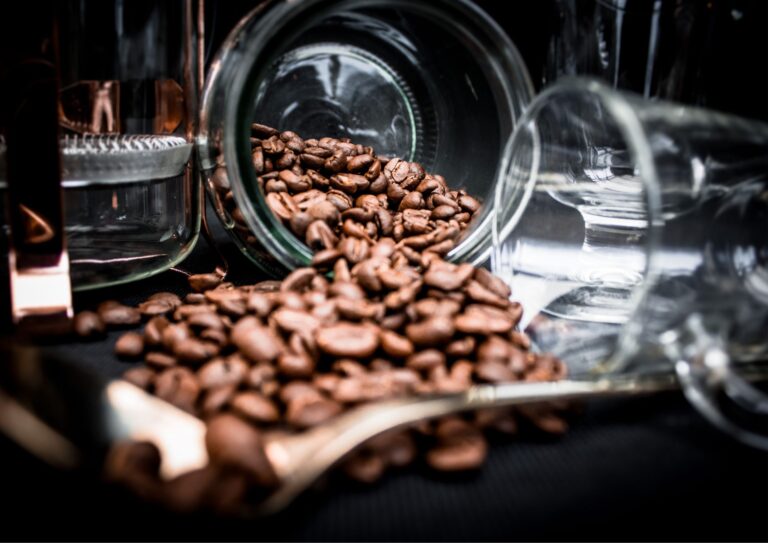Coffee is more than just a morning pick-me-up. It is a complex and captivating beverage that delights our senses and ignites our spirits. With so many different types of coffee, you can get from the cafe, such as latte, cappuccino, americano, espresso, and many more, each has its own coffee flavor.
The coffee flavor takes us on a remarkable sensory journey, from inhaling its intoxicating aroma to the final sip that dances on our taste buds. Each of us has our own particular taste. Knowing more about coffee flavors can help us refine our tastes and find one best suited to our particular tastes.
The characteristics these flavors bring to our taste buds play a big part in what makes drinking coffee a great experience. Join us as we embark on a captivating exploration of the intricate and diverse world of coffee flavor.
What Are Flavor Notes?

Flavor notes describe the distinct tastes and aromas in a particular coffee variety or blend. Not all coffee beans are safe. You can find many different coffee subspecies, each with a unique flavor profile with different tasting notes.
Similar to how tasting notes are used in the world of wine. You will have a different experience with a different bottle of wine. It is the same with coffee. Flavor notes in coffee help convey the sensory experience and provide consumers with a better understanding of what they can expect when enjoying a cup of coffee.
The flavor note can be incredibly complex. It is not very possible to describe it with just one word. Usually, flavor notes are used in addition to aroma.
What Influences Coffee Flavor?

The coffee flavor is more than just inherent to the particular coffee bean. Many factors influence the coffee flavor, such as the origin and roasting process. The overall roasting process affects the coffee flavor the most.
The origin of the coffee bean can have a significant effect on the coffee flavor. The same coffee bean type may taste different if it comes from a different origin. And why is that? The specific environmental factors relating to where the beans originate and are grown plays an important role. These environmental factors include the soil, the weather, how much sun the beans get, etc. Basically, anything that affects the growth of the beans will affect the coffee flavor.
There are a few ways to roast the coffee beans, which is why it will greatly impact the coffee bean flavor. Here are how coffee beans are roasted: light roast, medium roast, medium-dark roast, and dark roast.
A light roast will have sharper acidity and more origin flavors. It will also be clear and mild. While medium roast has a greater balance between sweetness, acidity, and aromas. The acidity will be less pronounced in medium-dark roasts, and the flavor will move into chocolate-like flavor territory. Dark roast has a distinct dark chocolate flavor and a heavy mouthfeel.
The altitude at where the coffee beans are grown also significantly impacts the coffee flavor. Flavors become more pronounced as the elevation increases.
The Most Common Coffee Flavor

Like wine, there are many subtle flavors in different coffee, which is often associated with their aroma. It can go deeper into the bean, allowing an enjoyable coffee-drinking experience.
The sweet flavor is one of the most common coffee flavors. Sweet things hold great value in food and drink, including coffee. Coffee beans do have sugar in them. It will be caramelized during the roasted process.
Most of the time, the sweet flavor notes in coffee are related to the roast instead of the coffee bean itself. Brown sugar is the main subcategory of sweet flavors we will encounter in coffee. For a caramel/caramelized flavor, it will be encountered more in a medium roast. For molasses flavor, you can find this flavor note in the medium-dark roast.
Another common coffee flavor is bitter, and most people will relate it to coffee. Do you know why coffee is bitter? The reason is because of caffeine. Caffeine is inherently bitter. Coffee contains a higher amount of caffeine, which is why you find coffee biter.
You can find bitterness in other foods, but if you balance the bitterness well and it is not overpowering, it can be enjoyed. Bitterness is the first flavor you want to look for when tasting your coffee. Find out how bitter it is and does it compliment the drink.

Fruity is also one of the common coffee flavors you can find. The coffee beans that are used to make coffee are actually seeds. They are grown inside the coffee cherry. It isn’t a big fruit but there is a very mild taste of apricot.
They have fruity flavors depending on the variety. Each variety, blend, and roast bring out a different type of fruity flavor. Flavors such as raisin and prune are found very desirable. It can be very pleasant. Prune is common in darker, espresso-style roasts.
If you want a unique experience, cherry flavor coffee can be a good choice. The coffee’s flavor is rather sweet, low in sourness, and very sought-after. Berries can be found in many coffees, and it has this bright acidity. Depending on the sweetness and depth, you can find different sorts of berries, such as wild berries, black current, and blackberries.
How To Navigate Coffee Flavors?

You can start by identifying the flavors of your favorite coffee. If you are currently coffees that have lots of caramel or toffee flavor, you are looking for sweet flavor notes. If you enjoy coffee that has berry flavor notes, coffee with fruity flavor notes may be something you are looking for.
Most of the time, we will be buying the same coffee or picking something new blindly, hoping we like it. But if you identify the flavor notes that you like and go for more flavor notes that fall in the same category, it can be a new experience.




